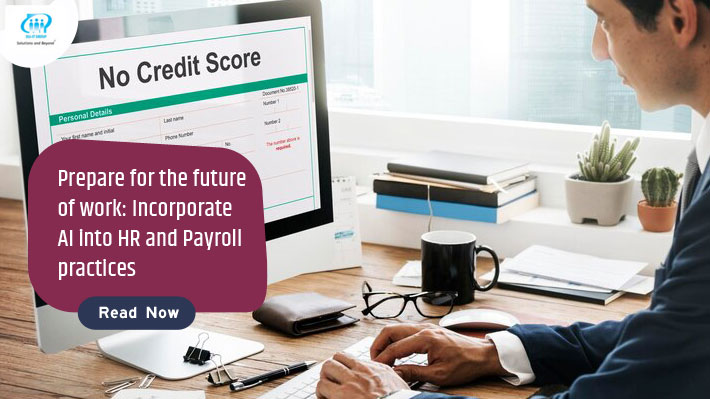Management of the workforce is an elemental task in the contemporary business climate that has been gradually cascaded with technological changes. Moreover, HR and payroll software are vital to make this activity true. Nevertheless, with the dawn of AI in business, companies have the option to revolutionize their operations and be the first to utilize the latest technology.
Improving efficiency using AI
AI-powered payroll software can perform the activities that are considered routine. These are known as data entry, payroll processing, and compliance management. Machine learning algorithms, being the pivotal point of these systems, can process big data sets and figure out patterns, outliers, and tendencies, in turn, aiding fast, precise decision-making.
Improving Employee Experience
Introducing AI into HR software can improve employee experience. This can be done with the aid of tailor-made suggestions, predictive analytics, and self-service features. Chatbots, empowered by NLP technology, can carry out frequent requests. Moreover, this can enable HR professionals to think more strategically and invest more time in the employees’ development.
Predictive Analytics: Strategic Planning Tool
The AI technology in HR and payroll software is the most potent through prediction or prior experience. Through the process of analyzing historical information as well as external rates, AI algorithms can predict future directions.
This will be related to employee turnover, workforce demography, and financial outlook with high precision. These insights would in turn give businesses the capability to have data-driven decision-making in case they need to do or warn about possible emergencies.
Implementing Compliance and Security
AI-based payroll software can very much reduce the possibility of an error in compliance. This is because it can easily identify and update tax regulations, compute deductions, and ignore possible discrepancies. Additionally, these high-level security tools as biometrics authentication and complex encryption algorithms contribute to data protection and maintain employees’ confidential information.
Adaptation To Remote Work Trends
Due to the development of remote work, organizations demand HR and payroll software that can be applied for the mercenary teams to fulfil their flexible work. AI-powered platforms allow interaction with the users when the facilitators are not physically present. They are accessible on mobile devices while providing virtual features that enhance communication and collaboration in a distributed environment.
Future Trends
- The future ahead will see that the Human Resources divisions bring forth a virtual reality (VR) revolution to change the way training and employee programs are carried out.
- VR interfaces not only offer a way of learning by doing, but also allow employees to secure such highly modern skills, rehearse complex scenarios, and have their performance appraised.
- Through VR-integrated training programs, HR software can support the interplay of this abstract information with practical application. This in turn makes the learning exercise more effective and impactful.
Cloud-Based Solutions
- The cloud-based payroll software greatly eases the process of HR software and systems by dispensing with physical forms.
- Also, by automating roles, and bringing about systematization.
- These platforms create a centralized database that can be accessed through any remote location.
- This can be done by the authorized personnel, irrespective of the place or time.
- Besides, the cloud-based payroll software has utility. This assists organizations in changing the payroll arrangements depending on their present requirements and needs.
- Such versatility becomes particularly important during the initial business stages, in which employers will need to deal with workforce changes.
Future-proofing Your Business
Through the integration of AI in HR and payroll operations, businesses can secure their vacancy during the times when the jobs market is going through transformation. They can also earn the position of best-of-the-class employers.
AI is transformational as it enables organizations to alter what has become obsolete. Moreover, it includes innovating and finally, being able to live and be successful in the digital age through automating repetitive tasks to uncover relevant insights.
Conclusion
Integrating AI into HR and payroll functions software is today no longer a luxury but a prerequisite for organizations seeking to grow amid disruption in the labour market. Following AI’s competence, enterprises can modify productivity, notify staff experience, ensure legal requirements, and be more competent. Be AI-enabled tomorrow to exploit all latency and solutions of HR and payroll software.
In the end, HR will not be replaced by machines but is likely to positively incorporate tech into the existing structure. Thus, it will make it more technologically advanced, comprehensive, and engaging with the whole workforce. For more information about the development of AI in HR and payroll software, you can check out DLT-IT blogs.
